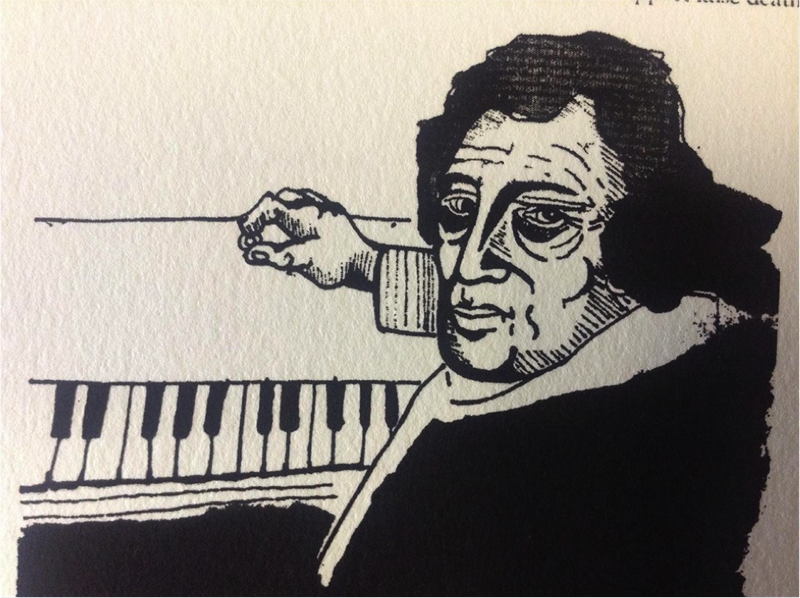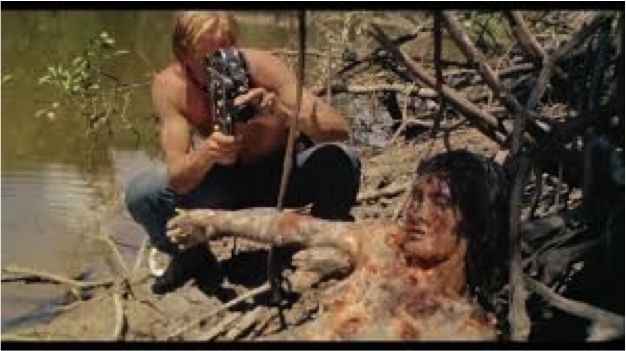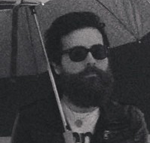
This is my attempt at performing something of a late eulogy for the Italian composer, Riz Ortolani. (Perhaps the word “performing” is not proper in the context of eulogizing, and instead, I am probably thinking of performing a “séance” –waking the dead.) After all, I feel like Ortolani’s greatest work lay exactly in that role –awakening. I watched Cannibal Holocaust (dir. Ruggero Deodato, 1980) as a teenager at the behest of a group of friends who not coincidentally identified themselves with extreme metal genres and subgenres. It was as shocking, gory, and disgusting as promised. Just like those viewers of the ‘80s, I was unsure about the authenticity of human death scenes, but the two most jarring aspects for me were 1) the unconscionable scenes of animal cruelty (which remains indefensible), and 2) the awkward score that seemed to contradict the visual narrative scene after scene. It was easier for me to simply denounce it as some hoax with a stupid soundtrack–drunkenly mocking the theme’s melody—that made me comfortable.
https://www.youtube.com/watch?v=kf1Vt6r-sj8&feature=kp
The experience though stuck with me and over a decade later, I returned to the film as part of a friend’s book project over exploitation cinema. I revisited the things that bothered me most about the film, and with added perspective I began to contextualize them within the larger framework of Italo-horror films at around the same time that I began to look back at those nostalgic years of teenage friendship and camaraderie. Suddenly, Deodato’s film was clearly a work of criticism –a warning of film and media’s ability to rampantly and absurdly profit over the entertainment value of real horror and terror, documented and/or facilitated by their own needs, and for the first time it could be globally beamed to everyone’s personal television sets. Therefore, the cannibal as a representative of the other had to be critically reexamined in light of our compressed geography, which was the result of virtualization. I suppose we were all becoming connected, interactive, and complicit in the broadcast satellite age. The question at the conclusion of the film has protagonist Dr. Harold Monroe (Robert Kerman) asking who the cannibals really are.

And what of Ortolani’s soundtrack, the subject of this essay, which only seemed to undercut the imagery? The strategy should first be understood as an extension of both the pseudo-documentarianism of Mondo Cane (1962, dirs. Paolo Cavara, Franco Prosperi and Gualtiero Jacopetti) with its cinéma vérité, aiding in an exaggeration of the “real,” and giallo film’s long, drawn out death scenes, mystery, surprise villains, and violently jarring musical scores (see Argento). Ortolani spans this lineage, having also been the composer of Mondo Cane, his most successful work of mainstream media. Cannibal Holocaust is both the height and end of the coupling of both styles of mondo and giallo cinema by bringing the self-consciousness of cinéma vérité, and subverting and critiquing its own makers as bloodthirsty auteurs (Mondo Cane runs rampant with animal cruelty and violence, but it mostly acts as an exploitation of the other, focusing on the shock, hedonism, violence, and cruelty of various cultures), hell bent on creating the drama and theatrics needed to make the ratings. It is therefore a work of suicide or self-consumption. Cannibal Holocaust, in all its glorious schlock, turns all of us into bloated, bloodthirsty villains.
In that case, then what could Ortolani possibly compose other than a score that attempts to makethe viewer/listener aware of their role as participant in the ensuing critique, or self-critique? Besides the obvious audio-visual conflicts are the multi-stylistic songs themselves. Classical orchestration is mixed with a form of electro-horror unquestionably mastered for the time (perhaps only matched by the work of John Carpenter). Tracks like the highly abstract “Massacre of the Troupe” perfectly represent the film’s ongoing, awkward melodic theme and its innovative use of synthesizers. There’s a dark, brooding beat with an anxiety driven by the orchestral rhythms that only add to the feeling of being in the wrong place at the wrong time. Suddenly, we cut back to the strange acoustic theme that has now transformed into a song of mourning. It all makes sense in the way that it’s all one big problem and we’re all part of it.
Recently, Ortolani’s work was used by Tarantino in multiple films, being a director who now cannibalizes the work of previous exploitation films. It appears often that Tarantino, so influenced by earlier Italo-cinema, makes films that say less about society in general and more about our opportunity to further mash up histories in entertaining ways. The anxiety and criticality is missing, though. Instead, we have pure bravado—music that fits the scene.
As was the case for teenage-me, Cannibal Holocaust lives on often as a savage rite of passage, and Ortolani’s masterpiece is a key ingredient. And today, I can think of fewer strategies for helping to break us out of the monotony of our screens, boxes, and virtual glasses than to compose works which call us out of our drunken media consumption by pointing at us and yelling,
What are you looking at?
What are you listening to?
Where are you?
AND WHO ARE YOU?
———–
Savage Rite, or EL RITO SALVAJE, Norberto Gomez, Jr.
three channel video/tv installation, 2011, featuring music of CANNIBAL BOOM.
SAVAGE RITE, or EL RITO SALVAJE (left channel) from Norberto Gomez Jr. on Vimeo.
SAVAGE RITE, or EL RITO SALVAJE (middle channel) from Norberto Gomez Jr. on Vimeo.
SAVAGE RITE, or EL RITO SALVAJE (right channel) from Norberto Gomez Jr. on Vimeo.
***



